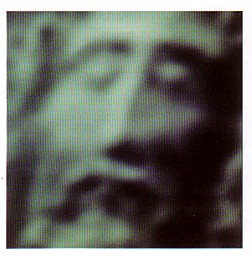The Turin Shroud
Friday, 4 May 2007
The mystery of the Turin shroud is a complex one. The claim is that it is a photograph of the dead body of Jesus Christ. That would be a miracle. But even it is a photograph of anybody else, it is still a strange mystery. The shroud apparently showed up for the first time in 1353, in Lirey, France. Before that year there is no information on the shroud. But photography was not discovered another 400 years in the future, so who and why made this photographic image in 1353? Or is it not a photograph at all? Even if it is a painting of some sort, it still has to be explained how such a realistic painting could be made at a time when nobody could paint so true to nature.
 Many research has been done trying to date the cloth. There are indications, like from the pollen studies, that the shroud is indeed woven around the year zero, and with material that can only be found in the place where Jesus supposedly was crucified.
Many research has been done trying to date the cloth. There are indications, like from the pollen studies, that the shroud is indeed woven around the year zero, and with material that can only be found in the place where Jesus supposedly was crucified.
Recently the theory has been proposed that Leonardo da Vinci made the shroud, and that the image is the body of Leonardo.
I just don’t know. I have never seen the shroud, and even if I did see it, it would not make me any wiser about its origin.
 The title of the LP The Silent Witness leaves no doubt about the belief of its makers: the image is caused by the blast of radiation that happened at the moment of the resurrection.
The title of the LP The Silent Witness leaves no doubt about the belief of its makers: the image is caused by the blast of radiation that happened at the moment of the resurrection.
No matter what the truth about the Turin shroud is, to make a soundtrack for a movie about an investigation into this mystery seems to me the wet dream of any score composer. But Alan Hawkshaw, who was asked for the job, was not very inspired, to say the least.
 His synthesiser orchestra (1978…) doesn’t play one single recognisable tune, it is all that typical new age music-for-people-that-don’t-listen nonsense. But on the B-side of the LP Kenneth More tells the story of the shroud and that is worth listening to.
His synthesiser orchestra (1978…) doesn’t play one single recognisable tune, it is all that typical new age music-for-people-that-don’t-listen nonsense. But on the B-side of the LP Kenneth More tells the story of the shroud and that is worth listening to.
By the way, the pictures that I used for this story are from a booklet that Gino Moretto wrote about the Turin Shroud. One picture shows a negative image of the shroud, and the other a 3D image of the face.